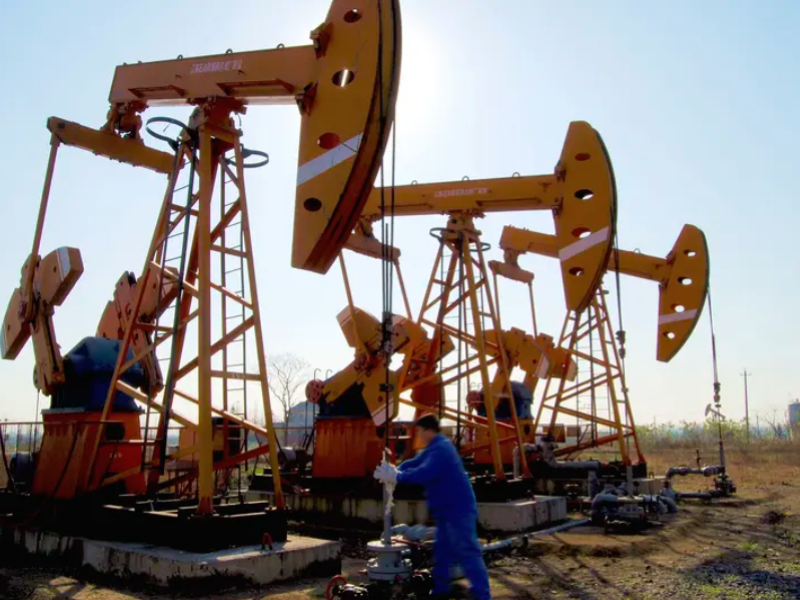Artificial lifting technology is an indispensable means in oilfield development. It refers to the system engineering of supplementing the lack of natural energy in the formation through external equipment to achieve efficient crude oil extraction. As the oilfield enters the mid-to-late development stage, the formation pressure drops, and the natural flow well is gradually unable to maintain production. At this time, manual lifting has become the key to ensure stable production.
Table of contents:
Natural flow well
Artificial lifting well
The difference between the two
Applicable scenarios for different well conditions
Natural flow well:
Natural flow wells rely entirely on the natural energy of the formation (such as raw high pressure, dissolved gas expansion, or side water drive) to push crude oil to the ground without the intervention of external equipment.Such oil wells are usually in the early high-yield stage of oilfield development, the formation pressure is sufficient, and the wellhead only needs to install a throttle valve to control the flow rate to continuously produce.Its advantages lie in low investment costs, simple operation and almost no energy consumption, which is typically manifested as self-injection of oil wells. However, natural flow accounts for only 10%-30% of the total life of the well. When the local pressure decays to a critical value or the gas-oil ratio drops sharply, the production will quickly fail and must be converted to manual lifting to maintain production.
The artificial lifting well replenishes energy to the borehole through external equipment to solve the problem of crude oil stagnation caused by insufficient formation pressure. Its core is the use of air lift, electric submersible pump, oil pumping machine or plunger system and other technologies (such as injecting high-pressure gas into the tubing to reduce the density of the liquid column, or mechanical suction through the downhole pump) to artificially lift the fluid to the ground. Such wells account for more than 80% of global production wells and are suitable for the middle and late stages of oilfield development, especially for low-pressure, deep wells, high-water content or high-viscosity reservoirs. Although it is necessary to bear equipment investment, energy consumption and maintenance costs (such as anti-partial wear and anti-air lock), manual lifting can significantly extend the life of the oil well for more than 20 years, and through precise parameter regulation (such as impulse, gas injection volume) to achieve efficient mining under economic limit production.

The difference between the two:
| Contrast dimension | Natural flow well | Artificial lifting well |
| Energy source | 100% dependent on the natural pressure of the formation (dissolved gas/water flooding) | External equipment replenishes energy (air lift/electric submersible pump/oil pumping unit, etc.) |
| Applicable stage | Early stage of oilfield development (high-yield and high-pressure period) | Mid-to-late development (after formation pressure failure) |
| Typical technical solution | Wellhead throttle valve control | Air lift, electric submersible pump, oil pump, plunger lift, etc. |
| Typical problem | A sudden drop in pressure causes the spray to stop | Partial wear/air lock/equipment failure |
Applicable scenarios for different well conditions:
Applicable scenarios of natural flow wells:
Natural flow wells are suitable for the high-pressure stage in the early stage of oilfield development. At this time, the formation has sufficient energy, and crude oil can rely on its own pressure (such as dissolved gas or water driving force) to continue to gush out of the ground. Such wells do not require additional equipment and can be produced only through wellhead valve control, so they are particularly suitable for reservoirs with shallow burial, good crude oil fluidity, and high gas-oil ratio. Its advantage is that the operation is simple and the cost is extremely low, but the mining window is short. When the local layer pressure drops significantly or the moisture content increases significantly, the production will rapidly decline and must be converted to manual lifting.
Applicable scenarios for artificial lifting wells:
Artificial lifting wells are the core support for the development of oil fields in the middle and late stages. When the formation energy is not enough to promote the rise of crude oil, external technology needs to supplement the power. Its technical choice is closely related to geological conditions:
Air lift: Suitable for high-gas-oil ratio wells with stable air sources, especially deep wells or offshore platforms.
Electric submersible pump: For straight wells with high liquid volume and high moisture content, it can efficiently handle large-flow crude oil.
Oil pumping unit: It is widely used in conventional oil wells in shallow and medium-sized onshore areas, with mature technology and easy maintenance.
Plunger lifting: Specially designed for low-pressure, intermittent liquid discharge wells, with low energy consumption and flexible operation.
Artificial lifting technology can effectively cope with complex conditions such as high-viscosity crude oil, sand-bearing formations or ultra-deep wells, and significantly extend the economic life of oil wells.

